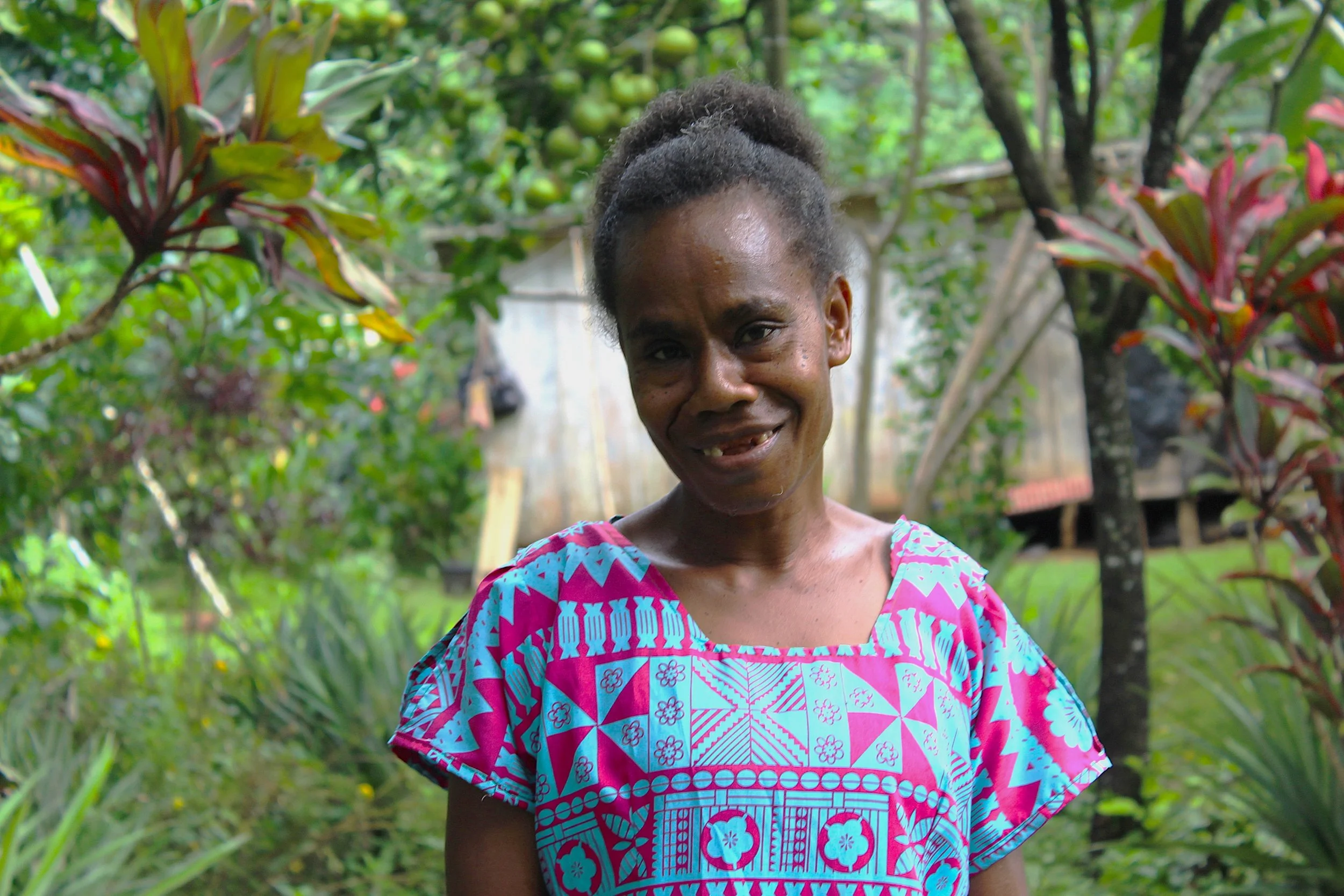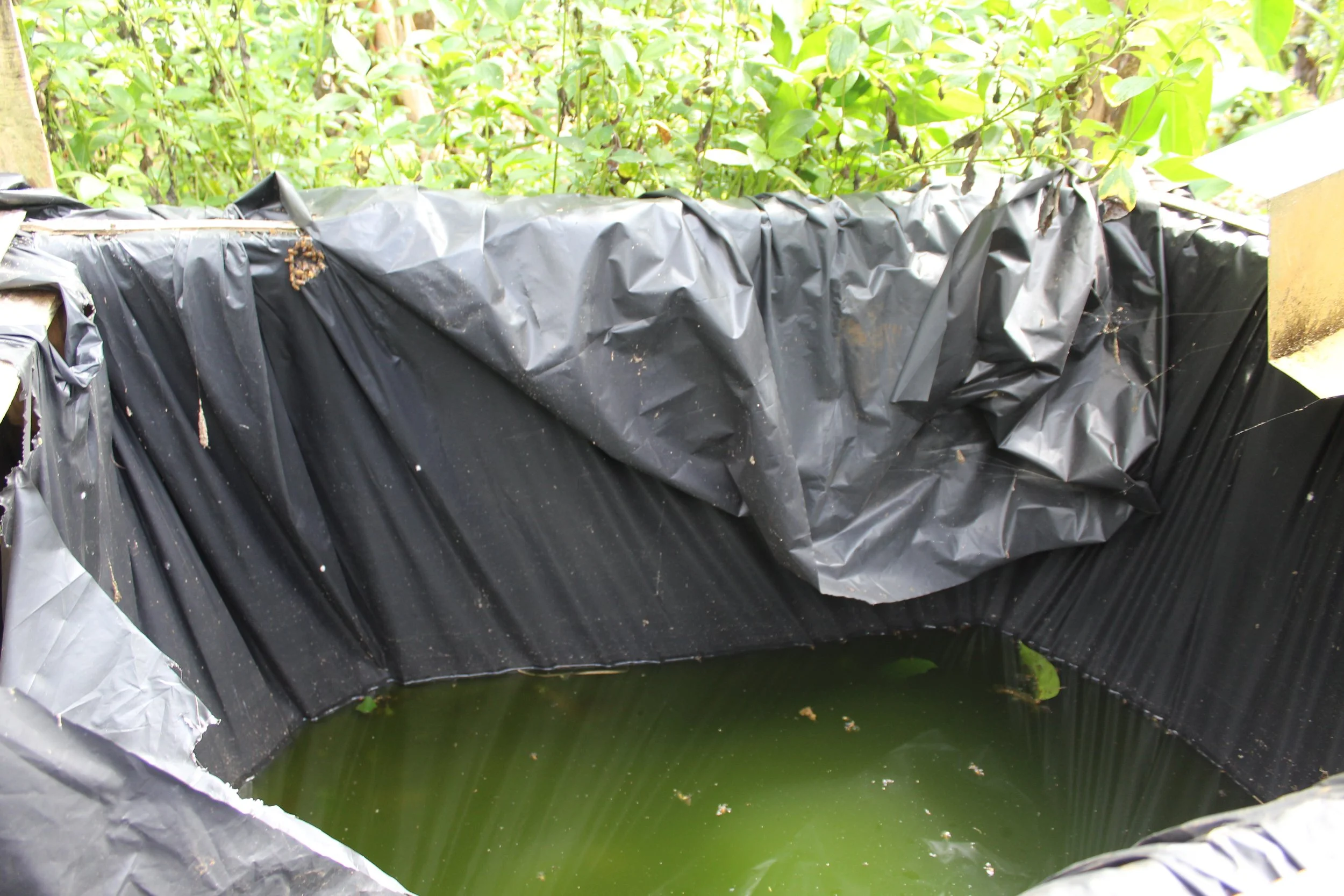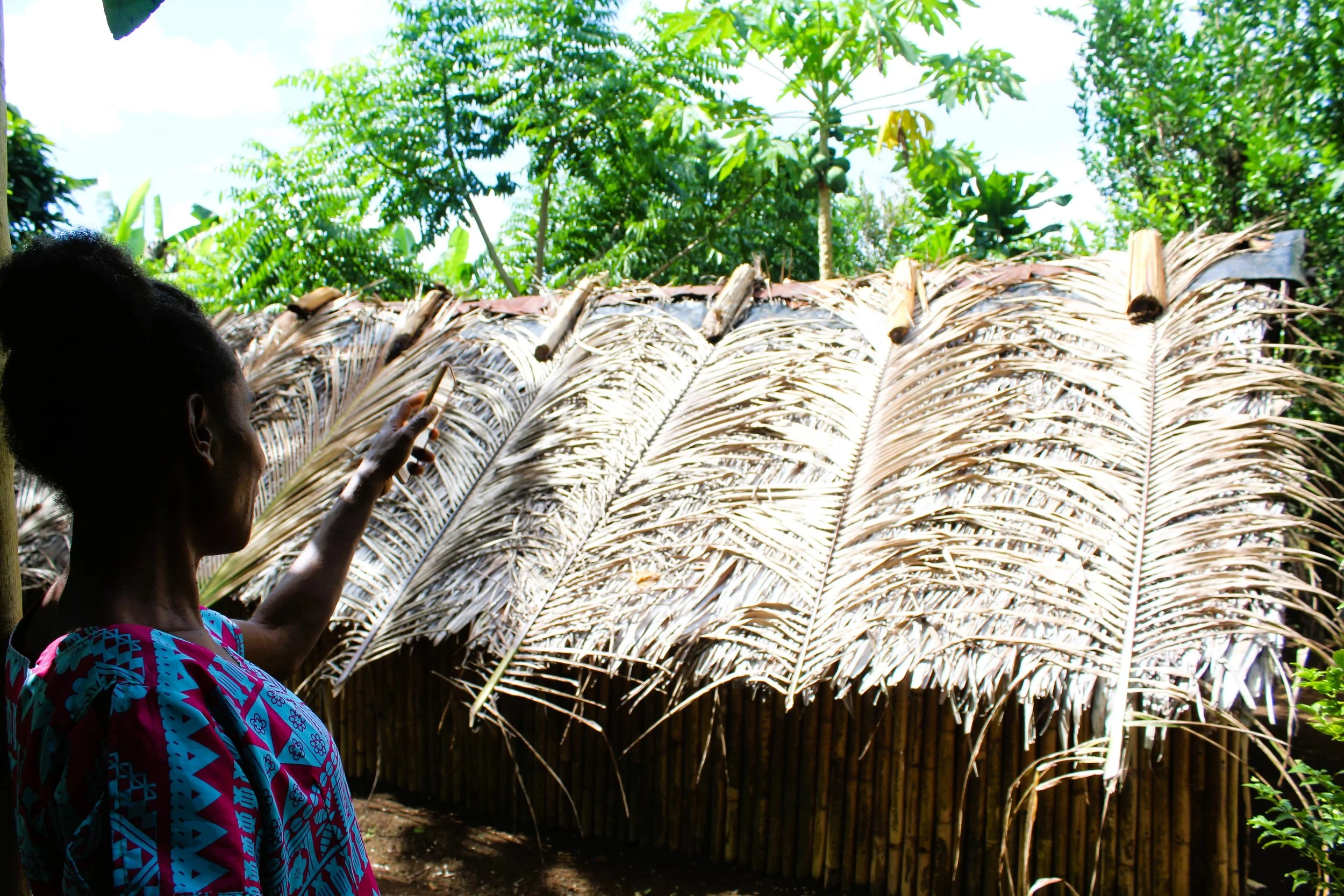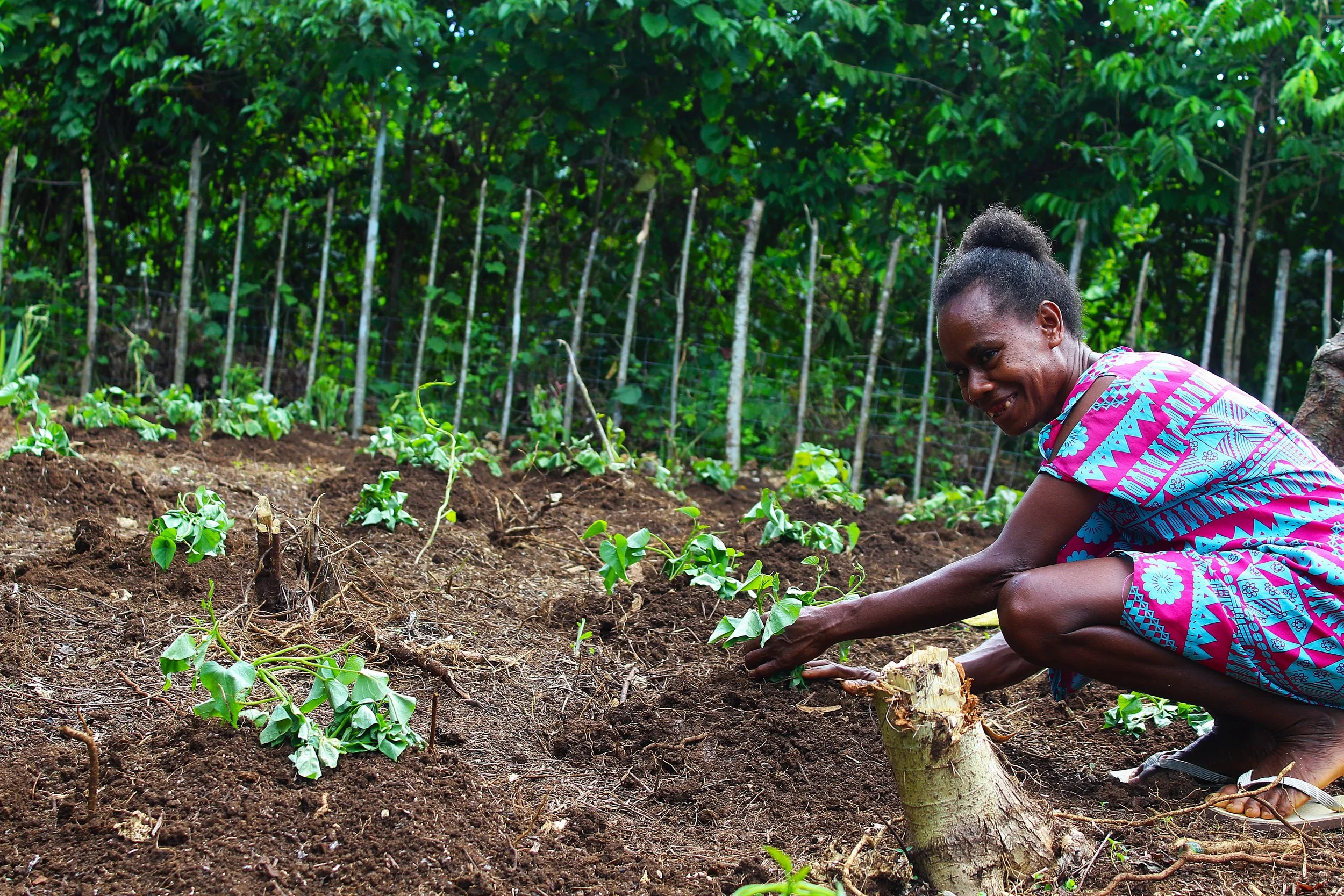The beautiful hearts of mothers
By Virginia Taravaki, Save the Children in Vanuatu
Celene urges more women, especially those living with disabilities, to step into leadership roles in CDCCCs. IMAGE: Virginia Taravaki/Save the Children
When the Community Disaster and Climate Change Committee (CDCCC) was first established in the community where Celene resides, she was elected as the vice-chairperson, a role she embraced with determination. The vast area under the local Area Council leadership encompasses remote villages, many inaccessible by vehicle, requiring long journeys on foot for the CDCCC to conduct awareness sessions. The CDCCC primarily serves communities far from the highway, nestled deep inland.
Celene on foot to remote communities. IMAGE: Virginia Taravaki/Save the Children
Born with vision impairment, Celene refuses to let any challenge hinder her ability to lead, prepare, and protect her community in times of disaster. Instead, she channels her resilience into becoming a positive role model, advocating for preparedness and social change. Disaster READY was designed in response to the increasing frequency and intensity of natural hazards affecting Vanuatu. The program’s core objective is to strengthen community-level disaster preparedness and response capacity through institutional development, inclusive planning, and localised risk governance.
Before the introduction of CDCCC, Celene and her husband relied on a makeshift well—a simple tarpaulin-lined pit designed to collect rainwater. Without proper covering, the water often became contaminated with leaves and debris. When Celene first heard about Disaster READY, she thought it would simply teach her about different hazards. However, she quickly realised its transformative potential for her home and community.
Contaminated rainwater from Celene’s makeshift well. IMAGE: Virginia Taravaki/Save the Children
“The biggest issue we face is the dry season,” Celene reflected. In late 2023, the CDCCC training arrived in her community, and Celene eagerly absorbed lessons on survival essentials. She learned the importance of water safety, inspiring her to take action.
“After attending the training, I now understand that water is life, and it needs to be clean and safe for me and my family,” she shared. This realisation spurred Celene and her husband to invest in two water tanks, ensuring a sustainable supply of clean water for their household during dry spells.
Under the guidance of Save the Children through the Disaster READY Program, her involvement in CDCCC became a beacon of hope for her family. “As CDCCC members, we are the first responders in our community whenever disaster strikes. It is our responsibility to prepare our people and assist those in need,” she explained.
Before the training, Celene often felt overlooked by local authorities. But now, she plays a vital role, working side by side with them.
“I am happy that we can now collaborate—it makes a real difference,” she said with pride. Celene’s husband embraced the CDCCC principles as well. Intrigued by discussions on structural safety, he gradually made important modifications to their home. Their new outdoor kitchen now features a low-hanging roof, providing extra protection during cyclones.
Celene showing her outdoor kitchen. IMAGE: Virginia Taravaki/Save the Children
“This structure is much safer, and I love it,” Celene remarked. Her husband also devised an innovative way to secure their home—tying ropes strategically around their roof so that in the event of a cyclone, Celene could pull them tight, keeping the structure intact. Whenever her husband is away for work, Celene listens attentively to weather reports, ensuring she takes timely steps to protect their home and family.
“I feel more confident now. I know how to prepare for smaller disasters, but if a situation grows beyond my control, I know when to evacuate,” she said. Celene has a prepared emergency kit, including a torch, dry food, and important documents, ready for any eventuality.
Despite her remarkable efforts, Celene faces ongoing challenges. Many community members struggle to understand how CDCCC operates. She and her team conduct extra awareness sessions, particularly for mothers, ensuring they have a safe space to ask questions.
“As a mother, I can’t just stand by when another mother doesn’t understand. We are the cornerstone of a home when fathers are absent,” she emphasised. She firmly believes that mothers must take up leadership roles in CDCCCs. “We need more women speaking up. Fathers have always been the ones talking, while mothers were expected to stay quiet. But not anymore,” she declared. Celene’s journey highlights the transformative power of disaster preparedness and community resilience. She urges more women, especially those living with disabilities, to step into leadership roles in CDCCCs and advocate for their families.
Celene in her backyard garden. IMAGE: Virginia Taravaki/Save the Children
“In every community, there’s always someone living with a disability. That’s why it’s important to have women in CDCCC—because mothers have a beautiful heart to listen to them and better assist.”
Acting Program Manager of the Disaster Ready Program, Valentin, affirms the significance approach: “Capturing the experiences of people with disabilities is a major step in creating meaningful impact. By encouraging Celene to be a strong voice for advocacy, we want to inspire an environment where inclusion is not just encouraged but actively practiced in disaster preparedness.”
Celene’s leadership in this space has helped shift local thinking from token inclusion to true participation and empowerment. Through consistent engagement with the Area Council and local Provincial stakeholders, she has emphasised the importance of embedding disability-inclusive practices, preparedness activities, and emergency response protocols.
Moreover, Celene plays a crucial role in supporting the transmission of the CDCCC's Community Action Plans to the Area Council and Provincial levels. Her efforts ensure that these plans are not only acknowledged but also integrated into broader disaster management strategies. This connectivity has created a more sustainable structure for local resilience building, where the community's voice — especially that of vulnerable groups—is recognized and acted upon at all levels of governance.






